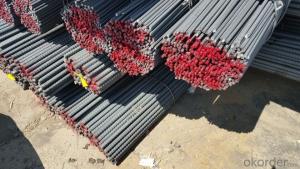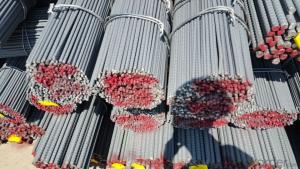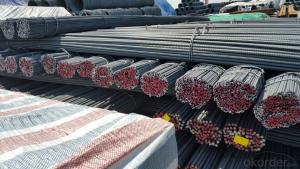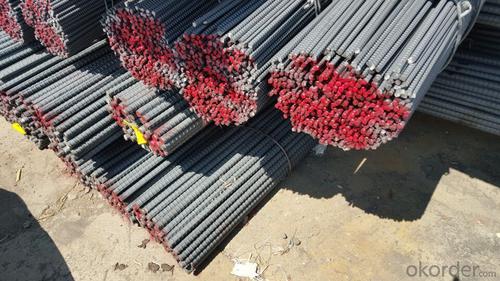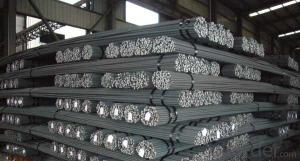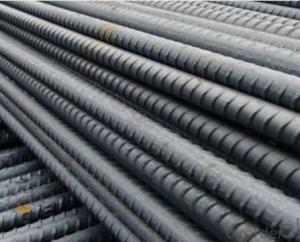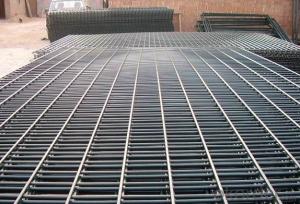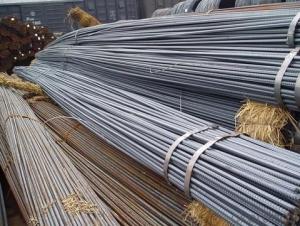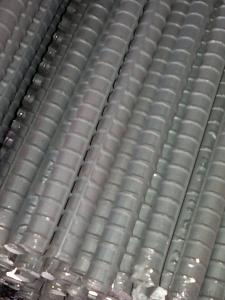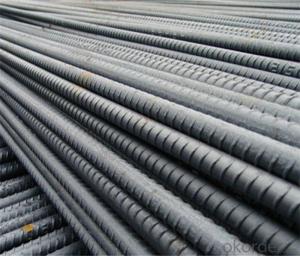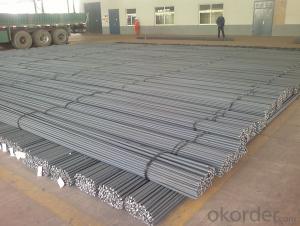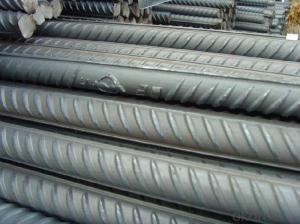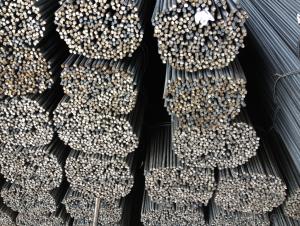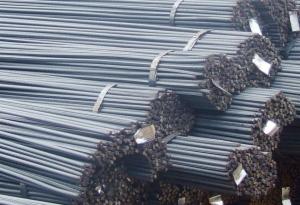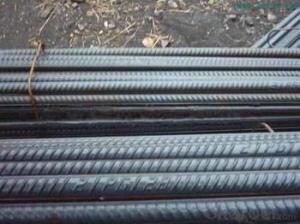Deformed Rebars for Reinforcing Concrete
- Loading Port:
- China main port
- Payment Terms:
- TT OR LC
- Min Order Qty:
- 100 m.t.
- Supply Capability:
- 10000 m.t./month
OKorder Service Pledge
OKorder Financial Service
You Might Also Like
Product Description:
OKorder is offering Deformed Rebars for Reinforcing Concrete at great prices with worldwide shipping. Our supplier is a world-class manufacturer of steel, with our products utilized the world over. OKorder annually supplies products to African, South American and Asian markets. We provide quotations within 24 hours of receiving an inquiry and guarantee competitive prices.
Product Applications:
Deformed Rebars for Reinforcing Concrete are ideal for structural applications and are widely used in the construction of buildings and bridges, and the manufacturing, petrochemical, and transportation industries.
Product Advantages:
OKorder's Deformed Rebars for Reinforcing Concrete are durable, strong, and wide variety of sizes.
Main Product Features:
· Premium quality
· Prompt delivery & seaworthy packing (30 days after receiving deposit)
· Can be recycled and reused
· Mill test certification
· Professional Service
· Competitive pricing
Product Specifications:
Manufacture: Hot rolled
Grade: HRB335,HRB400,HRB500
Certificates: ISO, SGS, BV, CIQ
Length: 6m – 12m, as per customer request
Packaging: Export packing, nude packing, bundled
Deformed Steel Bar | ||
Diameter (MM) | Cross Sectional Area (MM2) | Theorectical Weight (KG/M) |
6 | 28.27 | 0.222 |
8 | 50.27 | 0.395 |
10 | 78.54 | 0.617 |
12 | 113.1 | 0.888 |
14 | 153.9 | 1.21 |
16 | 201.1 | 1.58 |
18 | 254.5 | 2 |
20 | 314.2 | 2.47 |
22 | 380.1 | 2.98 |
25 | 490.9 | 3.85 |
28 | 615.8 | 4.83 |
32 | 804.2 | 6.31 |
36 | 1018 | 7.99 |
40 | 1257 | 9.87 |
FAQ:
Q1: How many tons of steel products could be loaded in containers?
A1: Usually the steel products are delivered by bulk vessel because of the large quantity and the freight. However, there are no bulk vessel enter some seaports so that we have to deliver the cargo by containers. The 6m steel product can be loaded in 20FT container, but the quantity is changed according to the size, usually from 18tons to 25tons.
Q2: How soon can we receive the product after purchase?
A2: Within three days of placing an order, we will arrange production. The normal sizes with the normal grade can be produced within one month. The specific shipping date is dependent upon international and government factors, the delivery to international main port about 45-60days.
Q3: How do we guarantee the quality of our products?
A3: We have established an advanced quality management system which conducts strict quality tests at every step, from raw materials to the final product. At the same time, we provide extensive follow-up service assurances as required.
Images:
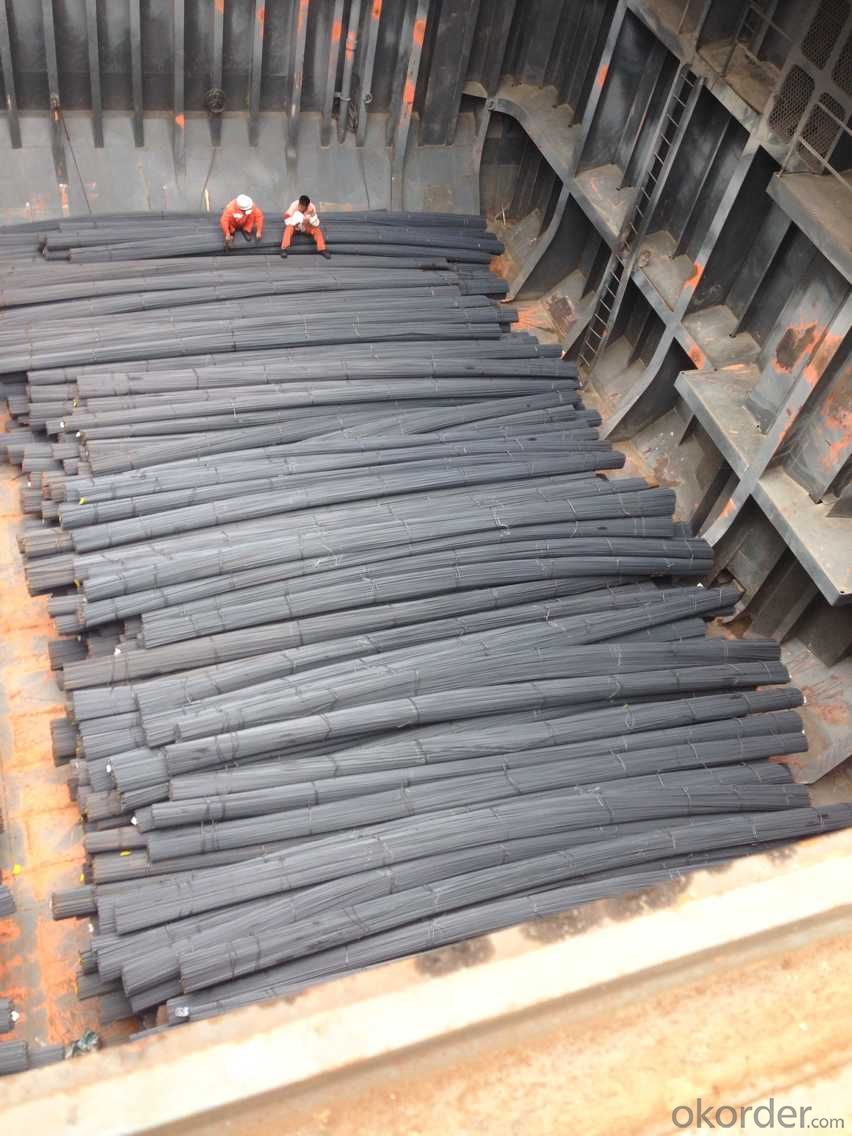
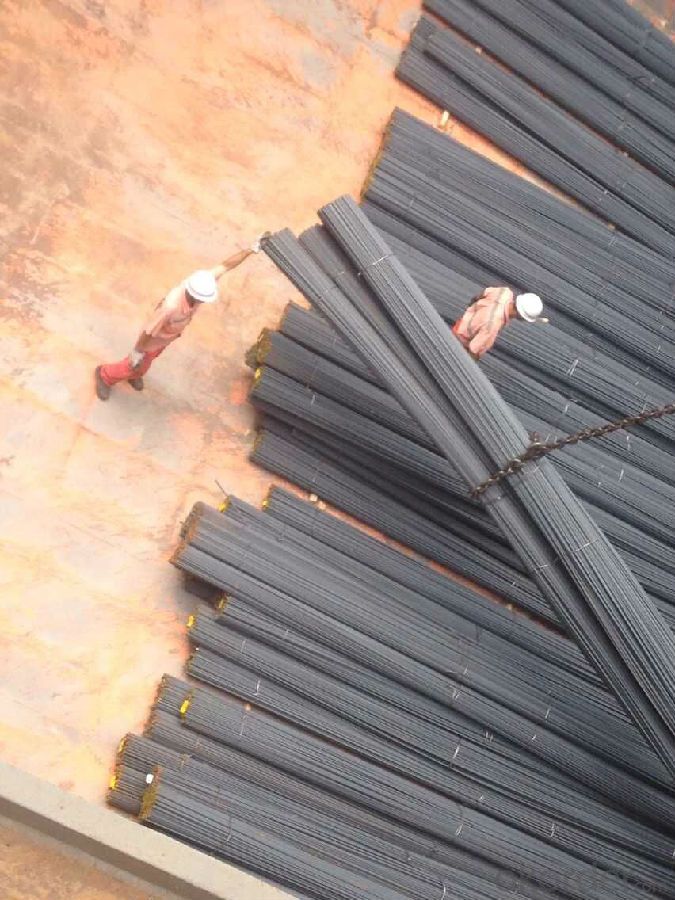
- Q: Are steel rebars suitable for use in high-temperature applications?
- Steel rebars are generally not suitable for use in high-temperature applications. Although steel is a strong and durable material, it has limitations when exposed to high temperatures. At elevated temperatures, steel can undergo significant reduction in strength and may even experience a loss of structural integrity, leading to potential failures. When steel is exposed to high temperatures, it undergoes a process called thermal expansion, which can cause it to weaken and deform. This phenomenon is particularly prominent in rebars, which are often used as reinforcements in concrete structures. The high temperatures can cause the rebars to expand and exert excessive pressure on the surrounding concrete, leading to cracks and potentially compromising the structure's stability. Additionally, prolonged exposure to high temperatures can result in a loss of the steel's mechanical properties, including tensile strength and load-bearing capacity. This can significantly reduce the rebars' ability to resist external forces and effectively reinforce the concrete. Therefore, it is generally recommended to use alternative materials, such as stainless steel or special alloys, for high-temperature applications. These materials are specifically designed to withstand elevated temperatures without losing their structural integrity. It is important to consult with experts and engineers familiar with high-temperature applications to determine the most suitable materials for specific projects to ensure safety and structural stability.
- Q: How heavy can a 25 mm thread steel bear?
- 25 thread steel one meter 3.86kg.Method of calculation: 0.00617 times the square of the diameter of the steel bar. The weight of each diameter of the steel bar (kg) can be calculated.
- Q: What are the guidelines for storing steel rebars on a construction site?
- The guidelines for storing steel rebars on a construction site typically include keeping them off the ground to prevent rust and corrosion, stacking them neatly and securely to avoid accidents, and protecting them from exposure to moisture and other harmful elements. It is also important to separate different sizes and types of rebars to ensure easy identification and accessibility when needed.
- Q: Are steel rebars suitable for reinforcement in airport runways?
- Yes, steel rebars are suitable for reinforcement in airport runways. They provide the necessary strength and durability to withstand heavy loads and repetitive aircraft traffic. Additionally, steel rebars offer excellent resistance to cracking and can effectively distribute the load, ensuring the longevity and safety of the runway.
- Q: Are there any disadvantages of using steel rebars?
- Steel rebars have several drawbacks that should be taken into consideration: 1. Vulnerability to corrosion: Moisture and oxygen can cause steel rebars to rust over time, compromising their structural integrity. This issue is particularly concerning in coastal areas with high humidity levels or structures exposed to harsh weather conditions. 2. Heavy weight: Compared to alternatives like fiberglass or carbon fiber reinforced polymers, steel rebars are relatively heavy. This poses challenges during transportation and installation, especially in large-scale construction projects that require heavy machinery for moving and positioning the rebars. 3. Higher cost: Steel rebars are generally more expensive than other reinforcement materials, which can drive up the overall cost of a construction project. Moreover, the price of steel is subject to market fluctuations, making it difficult to accurately estimate the budget for reinforcement materials. 4. Conductivity issues: Steel rebars have high heat and electrical conductivity, which can be problematic in structures requiring insulation or in areas with stringent electrical conductivity requirements. In such cases, additional insulation or grounding measures may be necessary, adding complexity and cost to the construction process. 5. Environmental impact: The production of steel rebars is energy-intensive and contributes to greenhouse gas emissions. The extraction and processing of iron ore for manufacturing steel rebars can have significant environmental effects such as deforestation, habitat destruction, and air and water pollution. Despite these disadvantages, steel rebars continue to be widely used in construction due to their high tensile strength, durability, and proven track record in providing structural support. Efforts are ongoing to address these drawbacks through advancements in corrosion-resistant coatings and the exploration of alternative reinforcement materials.
- Q: What are the typical costs associated with using steel rebars in a construction project?
- The typical costs associated with using steel rebars in a construction project can vary depending on factors such as the quantity and size of rebars required, market conditions, and location. However, in general, the costs can include the purchase price of the rebars themselves, transportation and delivery expenses, installation labor costs, and any additional fees or taxes. It is advisable to consult with suppliers and contractors to get accurate cost estimates for a specific construction project.
- Q: Can steel rebars be used in underground parking structures?
- Yes, steel rebars can be used in underground parking structures. They are commonly used as reinforcement in concrete to strengthen the structure and increase its load-bearing capacity. Steel rebars provide durability and structural integrity, making them suitable for underground parking structures that require robust support and resistance to corrosion.
- Q: How are steel rebars used in the construction of chemical processing plants?
- Steel rebars are used in the construction of chemical processing plants to provide strength and reinforce concrete structures. They are typically embedded in concrete foundations, walls, and floors to enhance their load-bearing capacity and ensure structural stability, especially in areas where corrosive chemicals and high temperatures are present. Rebars help prevent cracking and provide resistance against the harsh conditions commonly found in chemical processing plants, ensuring the longevity and safety of the structures.
- Q: What are the different types of steel rebars?
- There are several different types of steel rebars, including mild steel rebar, deformed steel rebar, epoxy-coated steel rebar, stainless steel rebar, and galvanized steel rebar.
- Q: What is the fatigue strength of steel rebars?
- The fatigue strength of steel rebars refers to their ability to withstand repeated loading and unloading cycles without experiencing failure or fatigue crack propagation. This strength can vary depending on factors such as the specific grade of steel, rebar size and shape, surface condition, and loading conditions. Generally, steel rebars have high fatigue strength due to their inherent toughness and ductility, making them suitable for applications in construction projects where cyclic loading is common, such as bridges, highways, and buildings.
Send your message to us
Deformed Rebars for Reinforcing Concrete
- Loading Port:
- China main port
- Payment Terms:
- TT OR LC
- Min Order Qty:
- 100 m.t.
- Supply Capability:
- 10000 m.t./month
OKorder Service Pledge
OKorder Financial Service
Similar products
Hot products
Hot Searches
Related keywords
